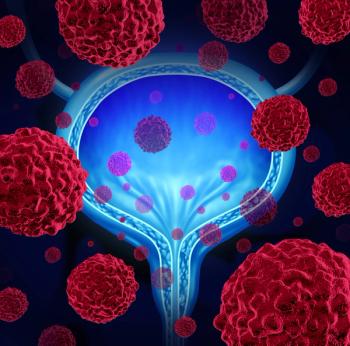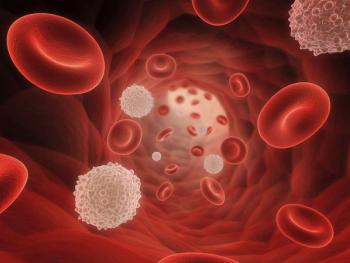
- ONCOLOGY Vol 14 No 3
- Volume 14
- Issue 3
Iodine-131 Tositumomab For Patients With Small Lymphocytic Lymphoma (SLL): Overall Clinical Trial Experience
Tositumomab and iodine -131 tositumomab (Bexxar) is a new radioimmunotherapy in development for the treatment of low-grade or transformed, low-grade non-Hodgkin’s lymphoma (NHL).
Tositumomab and iodine -131 tositumomab (Bexxar) is a new radioimmunotherapy in development for the treatment of low-grade or transformed, low-grade non-Hodgkin’s lymphoma (NHL). The data from four phase I-III studies were analyzed, and 14 patients with an initial histiologic diagnosis of small lymphocytic lymphoma (SLL; Working Formulation-A) were enrolled. Six patients had plasmacytoid differentiation, and four patients had transformed to a higher grade at study entry (two patients had diffuse large cell lymphoma and two, prolymphocytoid transformation).
Patients had received a median of four (range, two to six) chemotherapeutic regimens. A total of 8 (57%) patients had not responded to their last chemotherapeutic regimen, and the median duration of response to the last regimen was only 5.2 months (range, 2.5 to 11 months). The median age was 60 years; median time from diagnosis was 41 months; 3 patients had an elevated lactic dehydrogenase (LDH) level; and 11 patients had bone marrow involvement (< 25% lymphoma).
Of the 14 patients, 13 received a single dosimetric dose (450 mg of tositumomab intravenously [IV], followed by 35 mg of tositumomab radiolabeled with 5 mCi of iodine-131) and then had three whole-body counts obtained over the next 7 days. The whole-body counts were used to calculate the required activity (mCi) to deliver the desired total-body dose (TBD) for therapy (65 cGy for patients with a platelet count of 100,000 to149,999 cells/mm³ and 75 cGy for those with a platelet count ³ 150,000 cells/mm³). A single therapeutic dose (450 mg of tositumomab IV, followed by 35 mg of tositumomab containing an appropriate activity [mCi] of iodine-131 to deliver the TBD) was administered 7 to 14 days after the dosimetric dose. One patient received two dosimetric doses a week apart with two different antibody predoses, and received a 35-cGy TBD. Median follow-up was 21.1 months (range, 7.1 to 78.4 months).
A response (partial response [PR] or complete response [CR]) was observed in 9 (64%) of 14 patients, and the median response duration has not been reached after 25.7 months. Three (21%) patients had a CR.
The principal toxicity was hematologic; absolute neutrophil count (ANC) was < 500 cells/mm³ in 14% of patients, and platelet count was < 10,000 cells/mm³ in 7%. The nadir typically occurred at week 5 to 6, with recovery by week 8 to 9. Transient, mild to moderate nonhematologic toxicity occurred, with the most frequent events being fatigue and nausea. No patients developed human antimurine antibodies.
CONCLUSION: These results suggest that tositumomab is a safe and effective therapy for patients with relapsed SLL.
Articles in this issue
almost 26 years ago
FHIT Gene, Smoking, and Cervical Canceralmost 26 years ago
IOM Medical Error Estimates Questioned, But Legislation Consideredalmost 26 years ago
Less Toxic Therapies for Hodgkin’s Disease May Reduce Secondary CancersNewsletter
Stay up to date on recent advances in the multidisciplinary approach to cancer.

















































































